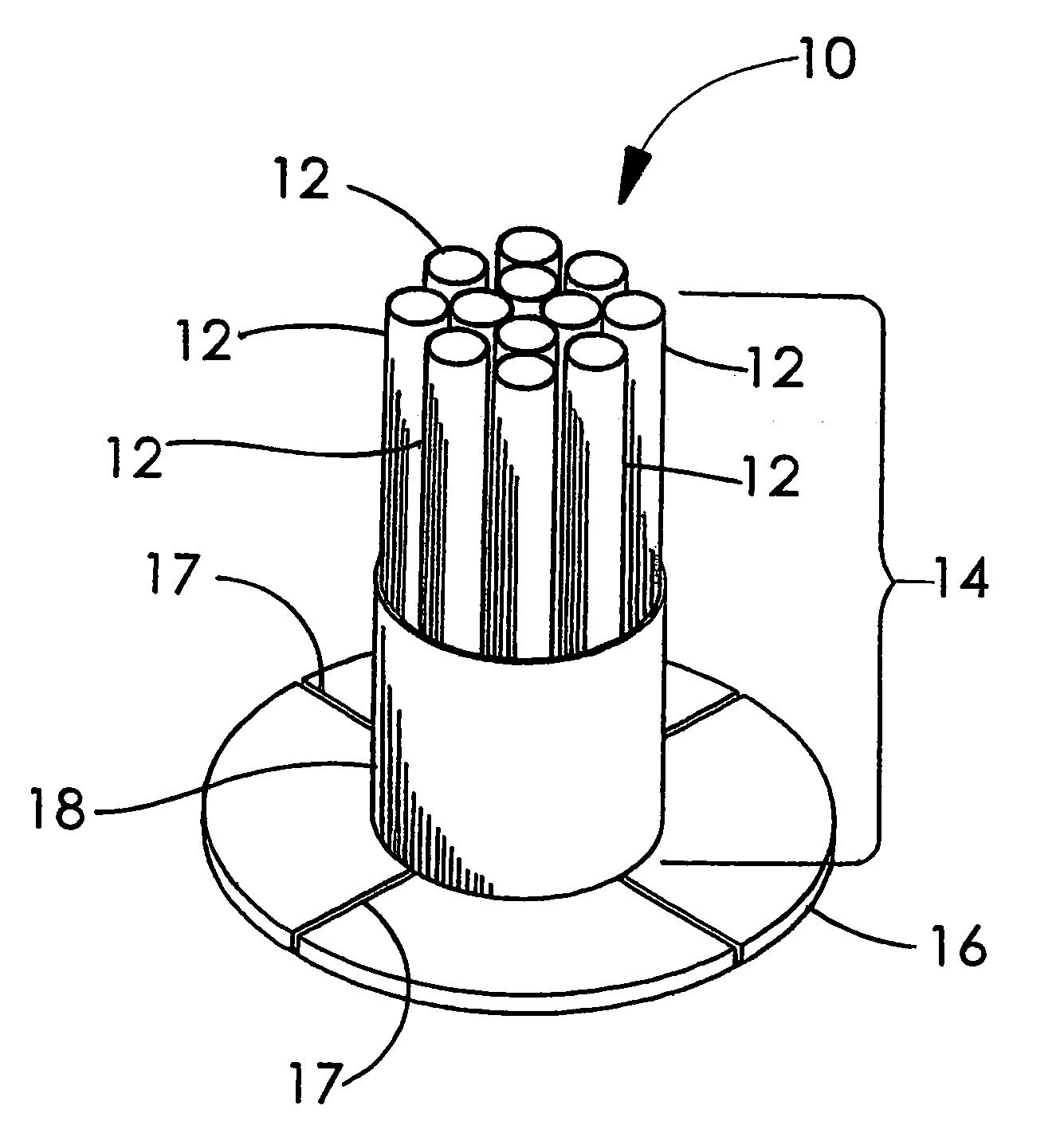Soft tissue defect repair device
- Summary
- Abstract
- Description
- Claims
- Application Information
AI Technical Summary
Benefits of technology
Problems solved by technology
Method used
Image
Examples
example 1
[0056] This example describes the construction of a multiple tube hernia repair device of the present invention as shown in FIG. 1. A triblock copolymer of 67% / 33% PGA:TMC (w / w) was acquired from US Surgical (Norwalk Conn.) and formed into a self-cohering web as generally taught by Hayes in U.S. Pat. No. 6,165,217. Sheets of this copolymer web material were formed into the 3 component types used in the construction of this device.
[0057] A first component used for making this device was a tube formed from the self-cohering web sheets that had an area density of approximately 8-10 mg / cm2 and a thickness of approximately 0.3 mm. The first step in making a tube was to cut an approximately 25 mm wide strip of the self-cohering web material from a piece of “unset” web sheet perpendicular to the belt direction used in forming the web. This strip of “unset” web material was then wrapped lengthwise around an approximately 5 mm diameter stainless steel rod into a “cigarette roll” having an e...
example 2
[0062] This example describes the construction of a corrugated tube hernia repair device of the present invention as shown in FIG. 4. A triblock copolymer of 50% PGA:TMC (w / w) was made and formed into a self-cohering web as generally taught by Hayes in U.S. Pat. No. 6,165,217. Sheets of this copolymer web material were formed into some of the components used in the construction of this device. Other components were made from expanded polytetrafluoroethylene (ePTFE) and from a bioabsorbable polymer adhesive, as described below.
[0063] A corrugated sheet was made by first placing a piece of the “unset” PGA:TMC web sheet (approximately 100 mm square, about 0.2 mm thick having and having an area density of approximately 4-6 gm / cm2) onto a piece of PeCap® polyester screen, product number 7-1000 / 45 (Sefar America, Monterey Park Calif.) material. This screen material, by virtue of its surface texture, was used to restrain the web material from dimensional change during the “setting” proces...
example 3
[0068] This example describes a method used to alter the stiffness and rate of bioabsorption of a bioabsorbable device. A solution was made by mixing 65% d,l-PLA:35% PGA available from Birmingham Polymers (Birmingham Ala.) in a 1:10 ratio by weight with acetone. A device as described in Example 1 was dipped into this solution which imbibed into the structure of the device, and then allowed to air dry. The resulting coated device was stiffer than prior to imbibing. Alternatively, this solution could be sprayed onto devices to achieve similar effects. Other copolymer ratios can also be used to vary the stiffness and rate of bioabsorption. Also, other ratios of polymer:acetone can be used to vary the final amount of polymer imbibed into or sprayed onto the structure of the device.
PUM
 Login to View More
Login to View More Abstract
Description
Claims
Application Information
 Login to View More
Login to View More - R&D
- Intellectual Property
- Life Sciences
- Materials
- Tech Scout
- Unparalleled Data Quality
- Higher Quality Content
- 60% Fewer Hallucinations
Browse by: Latest US Patents, China's latest patents, Technical Efficacy Thesaurus, Application Domain, Technology Topic, Popular Technical Reports.
© 2025 PatSnap. All rights reserved.Legal|Privacy policy|Modern Slavery Act Transparency Statement|Sitemap|About US| Contact US: help@patsnap.com



